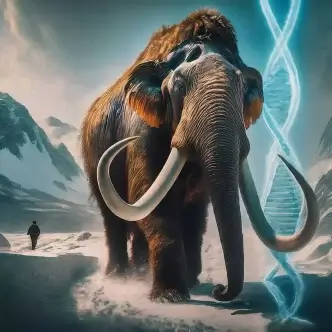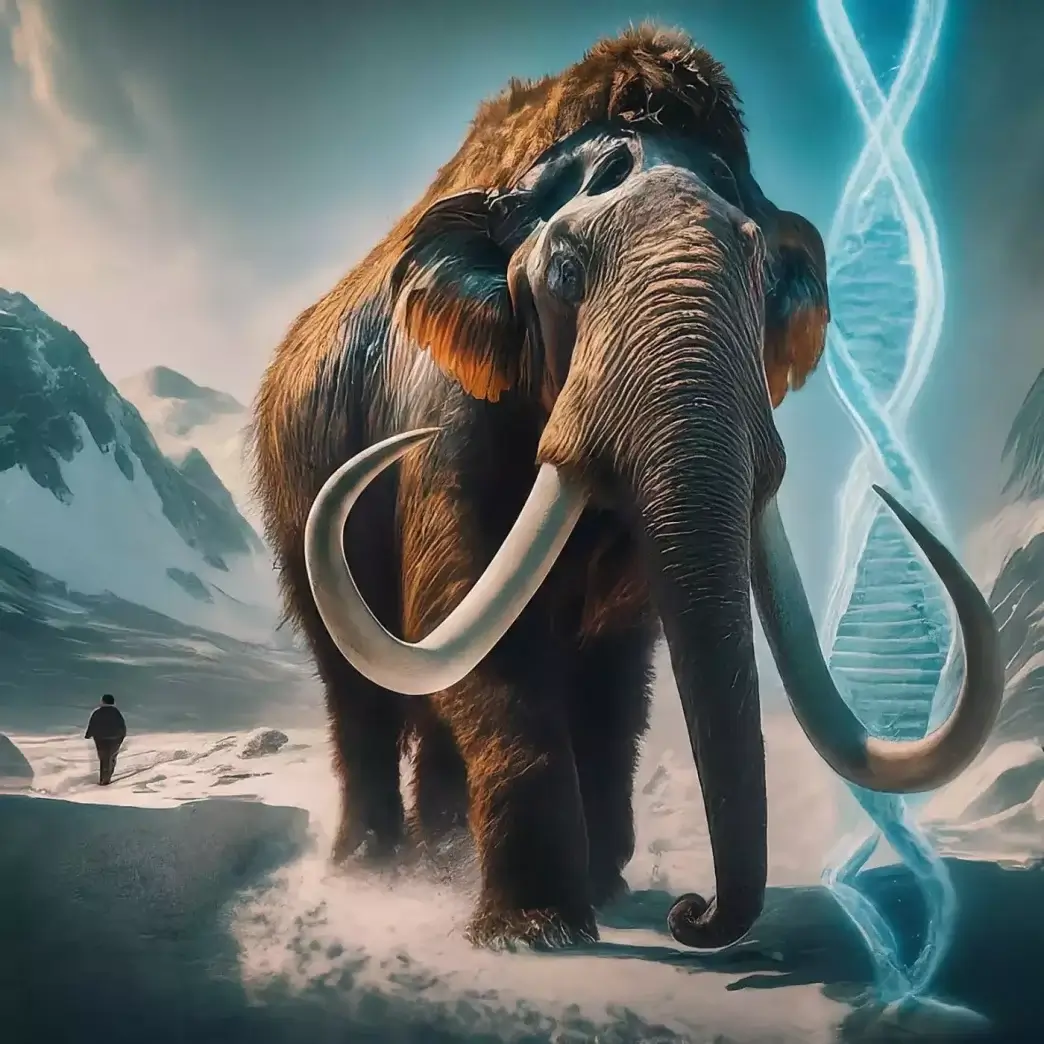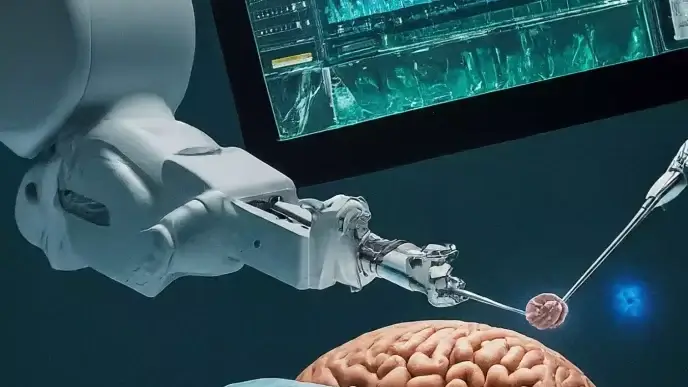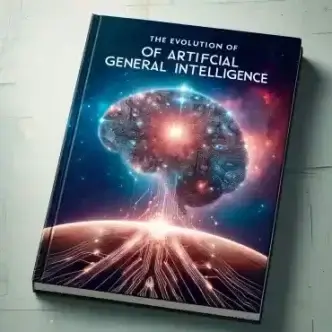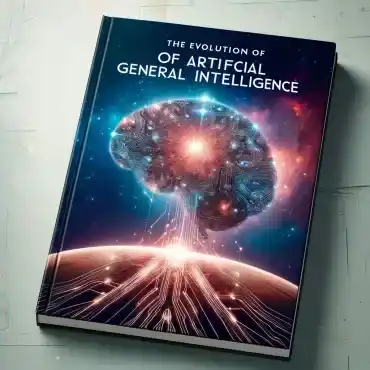For decades, the image of the woolly mammoth has captured our imagination. These massive, shaggy giants of the Ice Age roamed the Earth for millennia before disappearing roughly 10,000 years ago. Now, thanks to advancements in gene editing technology, the idea of bringing these prehistoric beasts back from extinction is no longer in the realm of science fiction (or animated movies). Companies like Colossal Biosciences are leading the charge, aiming to resurrect the mammoth by 2028. But is this a scientific marvel or an ethical quandary?
The De-Extinction Revolution
The concept of de-extinction, bringing back extinct species, is a relatively new field within science. While cloning, the creation of genetically identical individuals, has been around since the birth of Dolly the sheep in 1996, de-extinction takes things a step further. It involves using preserved genetic material from extinct animals and splicing it with the DNA of closely related living species.
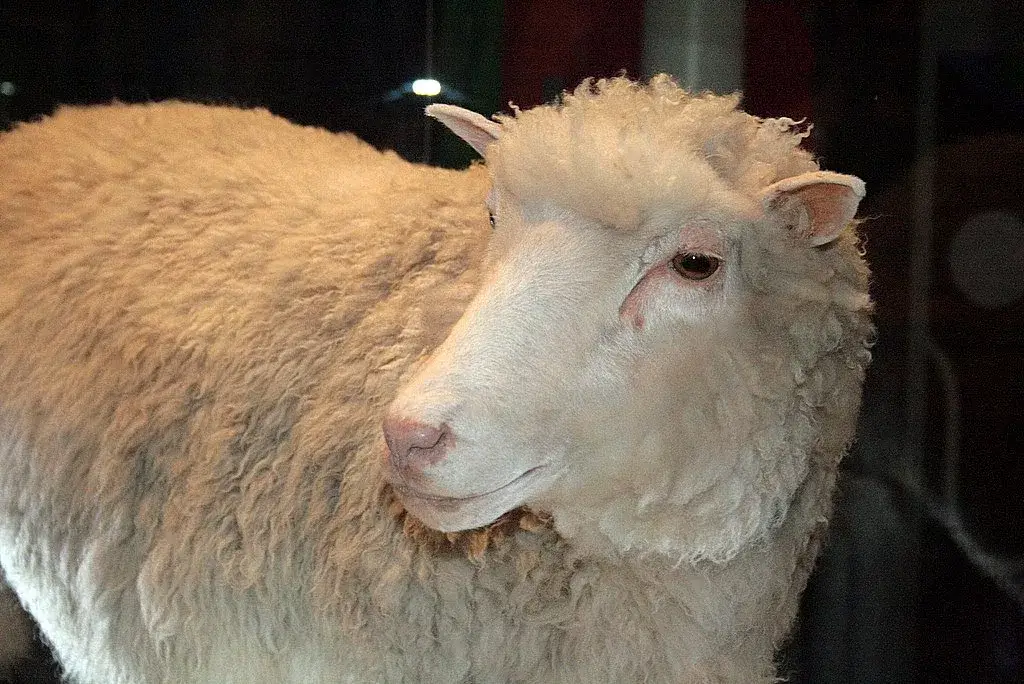
Dolly – The Cloned Sheep
This approach hinges on the ability to recover and analyze ancient DNA. Thankfully, the permafrost – permanently frozen ground – has acted as a natural freezer, preserving mammoth remains in remarkable condition. Scientists have been able to sequence the woolly mammoth’s entire genome, providing the blueprint for its resurrection.
A Mammoth Undertaking
Colossal Biosciences, a genetic engineering company founded in 2021, is at the forefront of the woolly mammoth de-extinction project. Their strategy involves editing the genome of Asian elephants to incorporate key mammoth traits. Woolly mammoths and Asian elephants share 99.6% of their DNA, allowing the company to use the elephants as a proxy species. The mammoth traits being introduced in these elephants include genes responsible for thick fur, cold tolerance, and smaller ears – adaptations crucial for surviving in an icy environment.
The process is complex. Scientists isolate specific mammoth genes and introduce them into elephant stem cells, which have the potential to develop into any cell type in the body. By carefully selecting and integrating these genes, researchers hope to create an elephant embryo with some mammoth characteristics. This embryo could then be implanted in a surrogate elephant or potentially grown in an artificial womb, a technology still under development.
While significant hurdles remain, recent advancements have led Colossal Biosciences to claim that the return of the woolly mammoth is ‘closer than ever’. The company has recently announced that it has successfully managed to put elephant skin cells into an embryonic state.
A significant step no doubt, but there is still a long way to go. The company now has to use gene editing techniques to manipulate DNA and create elephants that are a bit mammoth-y. Continued advancements in techniques like CRISPR/Cas9 that are a powerful tool for manipulating DNA with greater precision are fueling optimism within the scientific community. If Colossal Biosciences meets its target, we could be seeing a mammoth hybrid within 3-4 years.
Ethical Concerns: Walking a Tightrope
The prospect of resurrecting a long-extinct species raises a multitude of ethical concerns. Critics argue that reviving the mammoth is an unnecessary endeavor, diverting resources from conservation efforts for currently threatened species. They also highlight the potential ecological disruption. The mammoth played a specific role in the Ice Age ecosystem, and its reintroduction into a vastly different world could have unforeseen consequences.
Furthermore, the process itself raises ethical questions. Gene editing carries inherent risks of unintended mutations, potentially causing suffering to the resulting animals. The well-being of any surrogate mothers or the use of artificial wombs needs also needs to be morally considered.
Addressing these concerns requires a transparent and comprehensive ethical framework. Scientists, governments, ethicists, conservationists, and key public figures need to get together and codify a responsible path forward. De-extinction efforts should only continue if they can be demonstrably beneficial to ecosystems and the resurrected species themselves.
A Glimpse into the Future: More Than Just Mammoths
The potential applications of de-extinction technology extend far beyond the woolly mammoth. Species crucial to specific ecosystems, like the Tasmanian tiger or the passenger pigeon, could be candidates for revival. De-extinction efforts could also be used to introduce genetic diversity into critically endangered populations, helping them adapt to changing environments. This approach, known as “resurrection ecology,” could help reverse the loss of biodiversity and preserve fragile ecosystems for future generations.
However, alongside the potential benefits lie significant challenges. For many extinct species, the quality of preserved genetic material may be insufficient. Recreating the ecological niches these animals once occupied may be difficult or even impossible in today’s altered world.
Conclusion
The potential return of the woolly mammoth captures our fascination with the past and the power of science. While technological advancements offer a glimmer of hope, the ethical considerations and ecological uncertainties cannot be ignored. A cautious and collaborative approach will be key in ensuring de-extinction becomes a tool for restoring lost biodiversity, not a reckless experiment with unintended consequences.
The mammoth may be the first candidate in this new scientific frontier, but the implications of de-extinction reach far beyond the frozen tundra. It’s a story that’s only just beginning to unfold.
____________
Written by: NIMESH BANSAL
